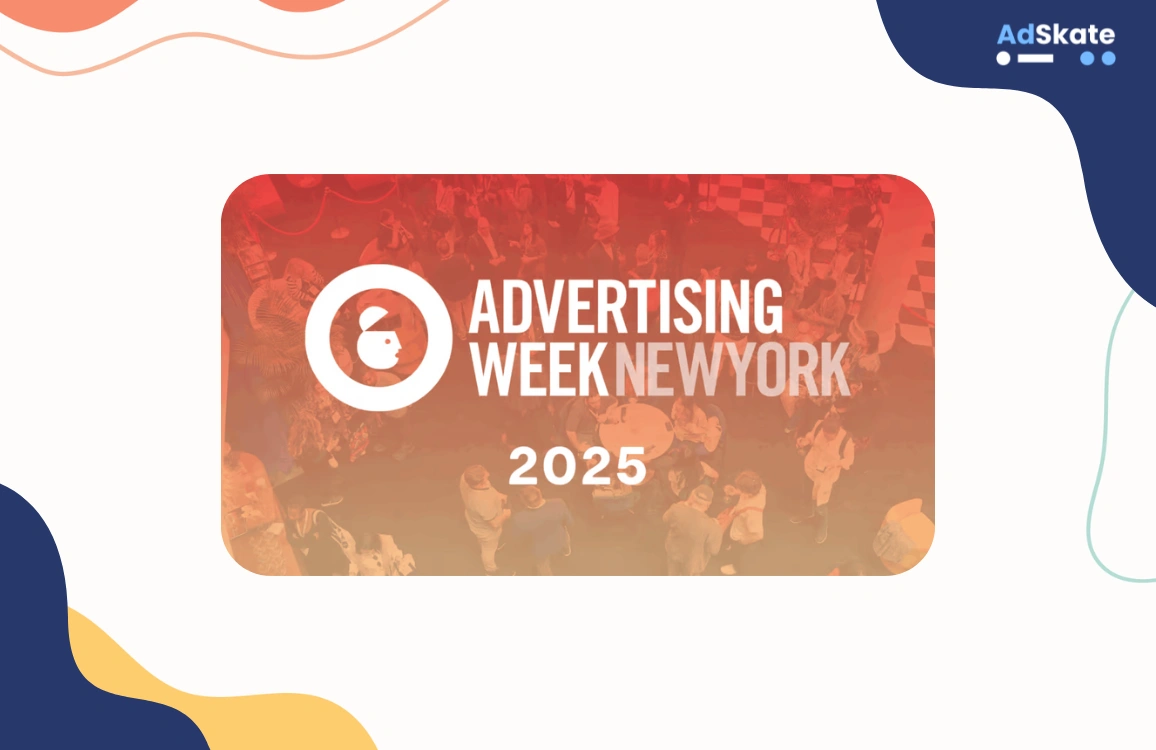AI Agents in 2025: How Autonomous Systems Are Reshaping Advertising and Marketing
.webp)
Listen to the podcast version here:
Introduction: The Rise of AI Agents
.webp)
In 2025 we’re witnessing a shift. What used to be “AI assistant” or “copilot” is evolving into something more autonomous: the AI agent. Organizations are experimenting with systems that don’t just respond when prompted, they act, adapt, and make decisions. For advertisers and marketers this matters because the role of creative, analytics, audience‑segmentation and media‑optimization is changing.
More than just plugging in generative‑AI for content creation, agents are being built to synthesize data, take action, and in some cases orchestrate entire workflows. As organizations adopt these systems the question becomes: how will marketing teams integrate with them, and how can agencies and brands leverage them for advantage?
What Are AI Agents? A Quick Primer
Let’s clarify what we mean by “AI agent”. According to IBM, an AI agent is a system that autonomously performs tasks on behalf of a user or another system by designing its workflow and using available tools.
Here are key attributes:
- Autonomy: It doesn’t just wait for a prompt; it can plan, act, adapt.
- Task‑oriented & goal‑oriented: The agent can understand objectives, break tasks into sub‑tasks, and execute.
- Integration with tools/environments: It might call APIs, access datasets, interact with external systems.
- Learning/adaptation: Some agents improve over time, or work in multi‑agent systems.
From the marketer’s perspective: think of an agent not simply as “AI that writes copy” but “AI that monitors campaign results, selects creative variants, reallocates budget, and suggests next moves”. The shift from assistive to agentic is meaningful.
Why Enterprises Are Betting on AI Agents
It’s one thing to talk about agents; it’s another to see returns. Early‑adopter organizations are reporting meaningful outcomes. For example, according to the Wall Street Journal, some companies built hundreds of “digital employees” performing tasks like scanning code, or shortening product‑development timelines by many weeks.
Meanwhile, reports from consultancy and research highlight that “agentic commerce” is helping firms re‑imagine value creation throughout the customer journey.
For marketers this means:
- You can automate not just measurement but decision‑making and action.
- You can achieve faster cycle times (e.g., concept to campaign) through agentic workflows.
- You can aim for improved efficiency and potentially higher ROI, because the agent continuously adapts rather than remaining static.
- But: this is still early. The frameworks, governance, and workflows are maturing. Which gives an opportunity for those who act now.
The Creative Leap: AI Agents in Marketing
Now let’s look more specifically at how agents change the advertising/marketing landscape.
Creative generation + optimization
Agents can go beyond single‑piece content creation. They can:
- Generate multiple creative variants.
- Test in simulated or real environments.
- Allocate spend to best‑performing variants.
- Adapt messaging, format or channel in real‑time.
Audience segmentation and media allocation
Imagine a marketing‑agent seeing that LinkedIn is under‑performing vs Google for a specific audience and shifting budget accordingly.
Consumer‑facing agentic commerce
Agents are not just behind the scenes. For example: when an end‑consumer agent (e.g., a shopping assistant) is making decisions, the advertising/marketing ecosystem changes. Brands must think about how they influence those agents.
Implications for creative analytics and testing
Because agents can simulate behaviours in synthetic environments (see next section), marketers can test more creatively with fewer real‑world stakes. They can use synthetic audiences, virtual labs, pre‑campaign testing. Agility becomes a competitive edge.
Read more about synthetic audiences here.
AI Agents as Creative Collaborators
Here we highlight how more advanced agentic systems (including research) inform marketing.
One example: DeepMind’s SIMA‑2 (an agent that plays, reasons, learns in 3D virtual worlds) shows how agents can engage with environments, learn from them, and adapt. While not built specifically for marketing, the implications are clear: marketing agents could simulate consumer behavior, test messaging in 3D/virtual settings, iterate creative in safe sandbox before paying for media.
What this looks like in practice for a brand/agency:
- A synthetic audience agent “plays” different ad scenarios, reacting as consumers might, providing insights into which creative resonates.
- A media‑allocation agent leverages these insights, interacts with spend‑APIs, adjusts bids.
- A creative agent takes feedback, refines variants, pushes them into production.
- This ecosystem allows marketers to become directors of agentic systems rather than micro‑managing each unit task.
AdSkate GPT: An AI Agent Built for Marketers

AdSkate GPT functions as a personal media analyst, offering a practical application of agentic AI tailored for marketers. Rather than simply providing static data or reports, it enables a conversational interface where users can explore campaign performance, creative options, and media strategies using plain language.
Its core capabilities include:
- Creative analytics: Assessing which messages resonate most with synthetic or real audience profiles.
- Media diagnostics: Identifying inefficiencies or opportunities across channels based on performance trends.
AdSkate GPT isn’t designed to replace marketers but to support their decision-making by bridging qualitative insights with quantitative evidence. It reflects the broader shift toward AI agents that collaborate with teams, not just answer questions, but help shape better questions and deliver faster, more actionable answers.
Learn more about AdSkate GPT here.
The Future: Autonomous Campaigns and Synthetic Collaboration
What’s coming next? If agents today are handling tasks, tomorrow they may handle entire campaigns end‑to‑end with human oversight. Some future‑looking scenarios:
- Agents that manage the full funnel: From audience research, creative production, media allocation, optimization and reporting.
- Marketplace of specialized agents: Each brand picks an agent tailored to content, audience, region, channel (some research suggests this).
- Synthetic environments & digital twins for marketing: Agents simulate consumer populations, test campaigns in virtual markets before real spend.
- Interaction between consumer‑facing agents and brand‑facing agents: As more consumers delegate decisions to their own assistants, brands may need to optimize for “agent‑to‑agent” influence rather than simply human‑to‑human.
- The upshot: Marketing teams will shift from executing to orchestrating. The human role becomes guiding strategy, defining agent goals, monitoring results, and wrapping creativity around agentic output.
How to Prepare Your Team for the AI Agent Era
.webp)
Here are practical steps for agencies and brands to get ready:
- Upskill teams to work with agents
- Educate marketers not just on “AI tools” but on how to define objectives, monitor agent workflows, interpret agent‑driven output.
- Shift mindset: from “I write the ad, submit it” to “I define the goal, agent suggests, we iterate.”
- Rethink workflow and governance
- Map processes where agents can take over repetitive or data‑intensive tasks (e.g., creative variant generation, media adjustment, audience segmentation).
- Build oversight, measurement and feedback loops: agents are powerful but still require guardrails.
- Select the right agentic platform
- If you invest in an agent (e.g., AdSkate GPT) or other vendor, evaluate autonomy, integration, feedback capabilities.
- Consider how it fits with your existing martech/adtech stack.
- Start with pilots and sandbox testing
- Before full deployment, test agents in controlled campaigns or segments to validate ROI, creative impact, integration.
- Leverage synthetic audiences or simulation if possible to reduce risk.
- Maintain creativity and human oversight
- Agents are enablers, not replacements. The human team still defines brand voice, strategy, and novel ideas.
- Protect against over‑automation: creativity thrives when humans + agents collaborate.
Conclusion: Rethink What “Creative” Means
AI agents represent more than a new capability, they mark a fundamental shift in how marketing work gets done. As these systems become more autonomous and integrated, they begin to take on roles that span insight generation, execution, and adaptation.
For marketers, the real opportunity lies in understanding how to collaborate with these agents, using them not just to speed up processes, but to ask better questions, explore more variations, and test ideas earlier in the cycle. The challenge is to do this with intention: aligning agents with strategy, maintaining human context, and preserving space for creativity.
Tools like AdSkate GPT illustrate what this looks like in practice. Not as a replacement for creative thinking, but as a way to explore it more efficiently, helping teams move from insight to action faster. As agents continue to evolve, marketing will too. The teams that adapt thoughtfully will be best positioned to lead.
.webp)
.webp)
.webp)

.webp)
